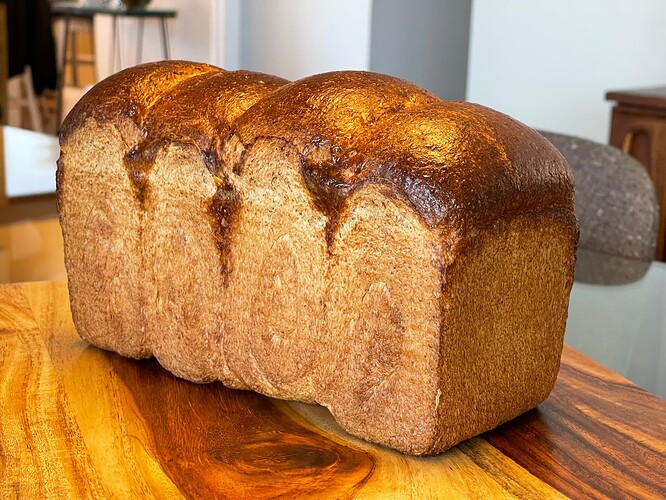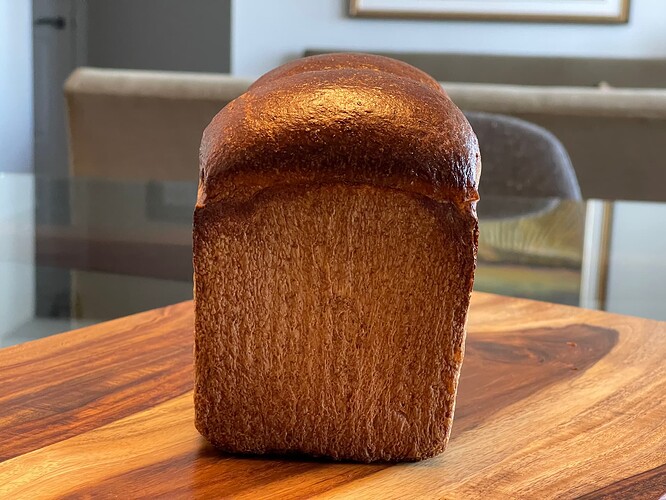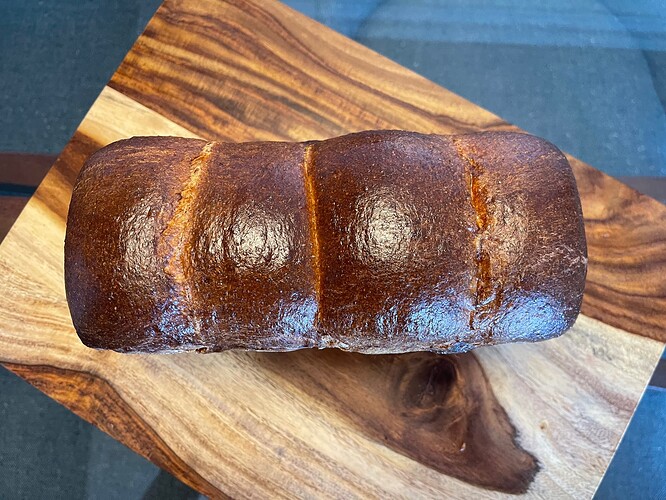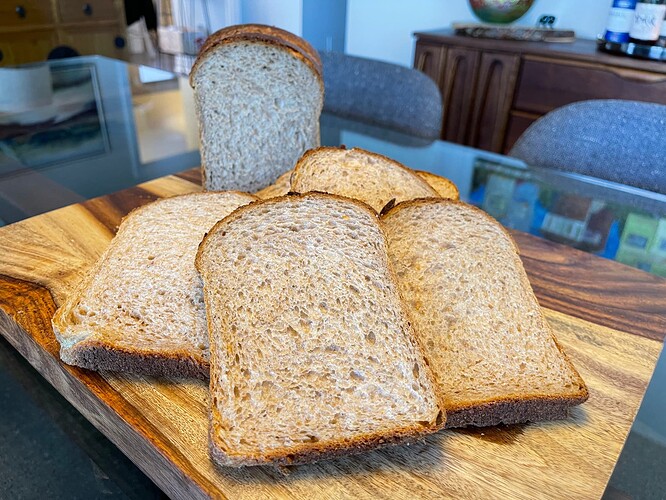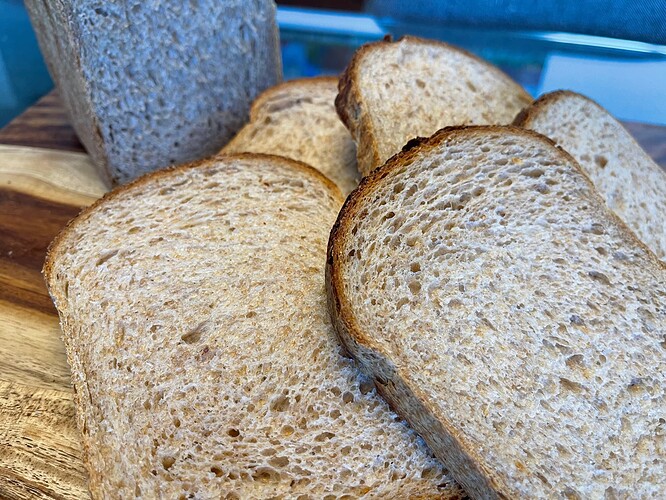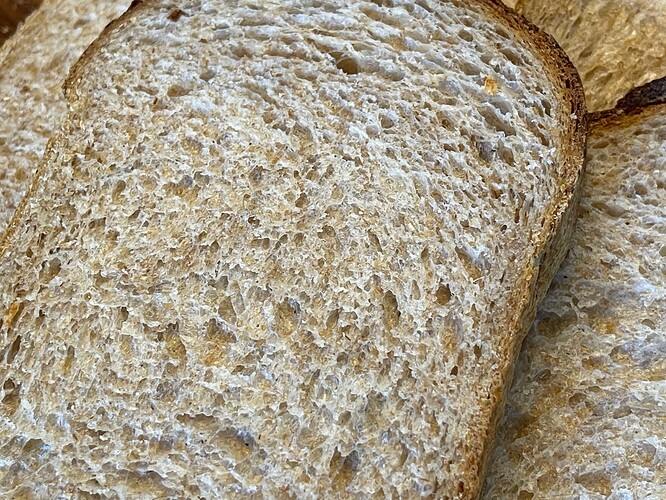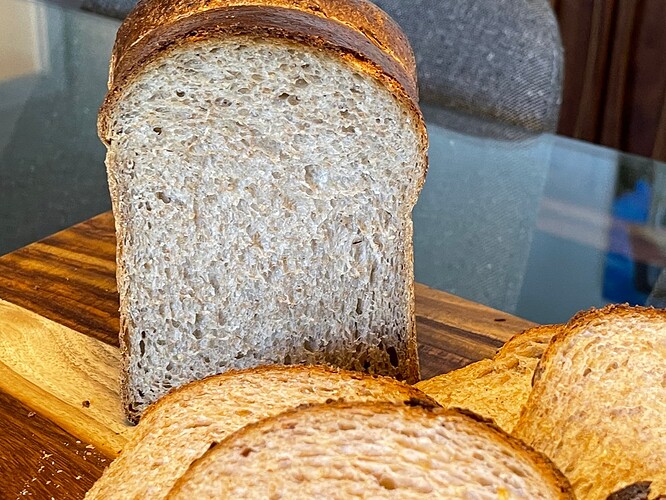My original plan was to test bake a bread raised by sakadane, however, that didn’t get bubbly enough to raise anything. So plan B was baked instead. I have a small amount of einkorn that I haven’t touched recently and thought that it would be perfect to use as a tangzhong. It has poor gluten so gelatinizing it in a tangzhong is a perfect way to add it to a bread. I also enjoyed a test bake of buttermilk bread that I did recently so decided on a buttermilk bread.
Instructions
Levain
Mix the levain ingredients in a jar or pyrex container with space for at least 300% growth.
Press down with your knuckles to create a uniform surface and to push out air.
At a temperature of 78ºF, it typically takes up to 10-12 hours for this sweet stiff levain to be at peak.
Tangzhong
Put about 1” of water in a sauce pan set on medium high heat. In the bowl of the stand mixer stir the buttermilk and flour until blended. Then place the bowl on the sauce pan to cook the tangzhong (Bain Marie) for several minutes until well thickened, stirring regularly with a spoon or heat-resistant spatula. Theoretically it should reach 65ºC (149ºF) but I don’t find I need to measure the temperature as the tangzhong gelatinizes at this temperature. Let cool in the bowl and then refrigerate until the next morning.
Dough
In the bowl of a stand mixer, add the milk, egg, tangzhong, salt, sugar and levain. Mix and then break up the levain into smaller pieces. Next add the flour and vital wheat gluten. Mix on low speed until there is no dry flour remaining. Once incorporated increase the speed gradually to medium. Mix at medium until the gluten is moderately developed. With the mixer running add the room temperature butter one pat at a time until it is fully incorporated, waiting until each pat is well incorporated before adding the next. Continue to mix until you can pull a good windowpane, not quite as good as a white flour because the bran will interrupt the windowpane somewhat.
Shape the dough into a tight ball, cover in the bowl and ferment for 3-4 hours at 82ºF. There should be some rise visible at this stage.
You can next place the dough into the fridge to chill the dough for about 1.5 hours, this makes rolling the dough easier, remember if you do so the final proof will take longer. Alternatively, you can do a cold retard in the fridge overnight.
Prepare your pans by greasing them or line with parchment paper. Scrape the dough out onto a clean counter top. Lightly flour the bench. Transfer the dough onto the bench and divide it into four. I like to weigh them to have equal sized lobes. Shape each tightly into a boule, allow to rest 5 mins. Using a rolling pin roll each ball out and then letterfold. Turn 90* and using a rolling pin roll each out to at least 8”. Letterfold again from the sides so you have a long narrow dough. Then using a rolling pin, roll flatter but keeping the dough relatively narrow. The reason to so this extra letterfold is that the shorter fatter rolls when placed in the pan will not touch the sides of the pan. This allows the swirled ends to rise during final proof. Next roll each into a tight roll with some tension. Arrange the rolls of dough inside your lined pan alternating the direction of the swirls. This should allow a greater rise during proof and in the oven.
Cover and let proof for 6-8 hours, longer time if you chilled your dough for shaping. I proof until the top of the dough comes to within 1 cm of the top edge of the pan.
Preheat the oven to 350F and brush the dough with the egg-milk wash (1 egg with 1 tsp of milk and pinch of salt). Just prior to baking brush with the egg-milk wash again.
Bake the loaves for 50 minutes or until the internal temperature is at least 190ºF, rotating as needed to get even browning. Shield your loaf if it gets brown early in the baking process. After 50 mins remove the bread from the pan and bake a further 10 mins by placing the loaf directly in the oven on the rack with the oven turned down to 325ºF. You can brush the top of the loaf with butter if you wish at this point while the bread is still hot to keep the top crust soft.
